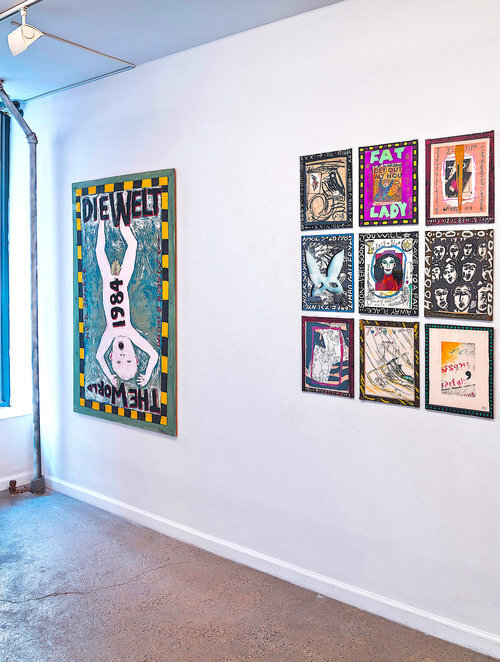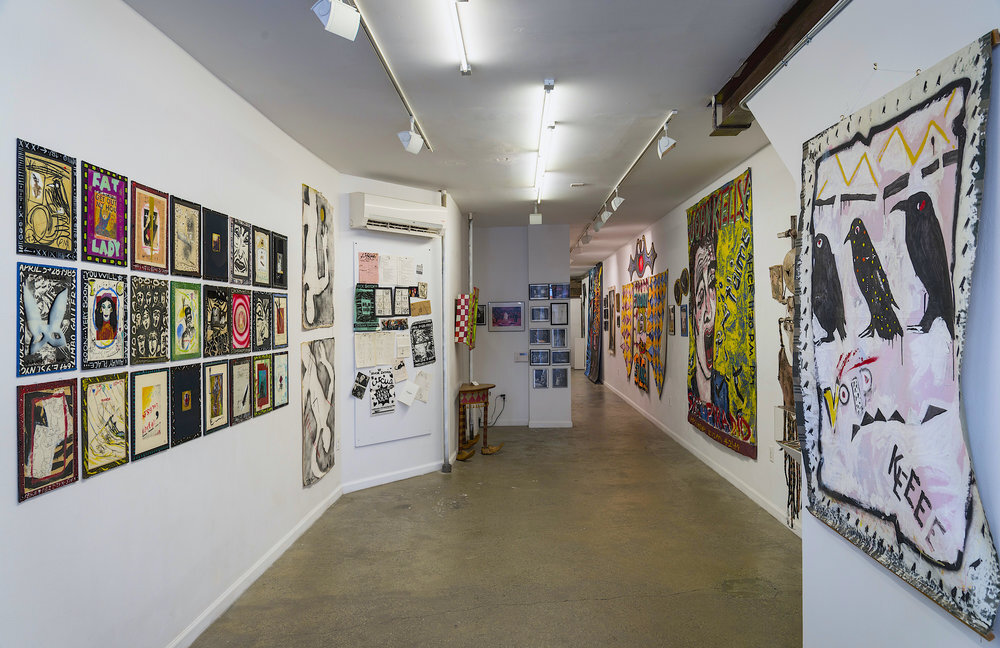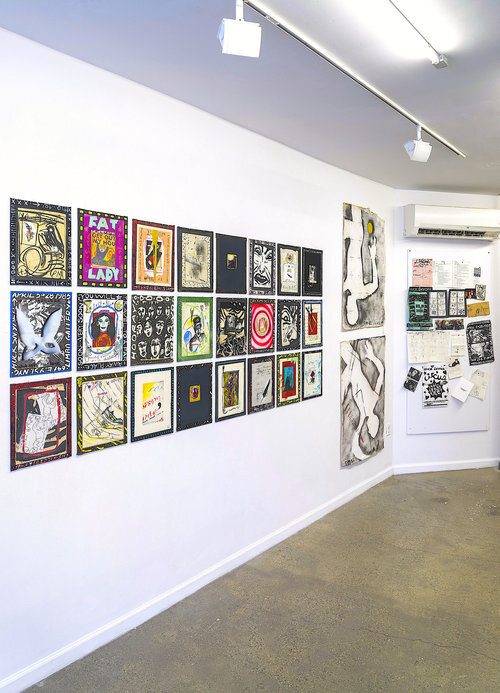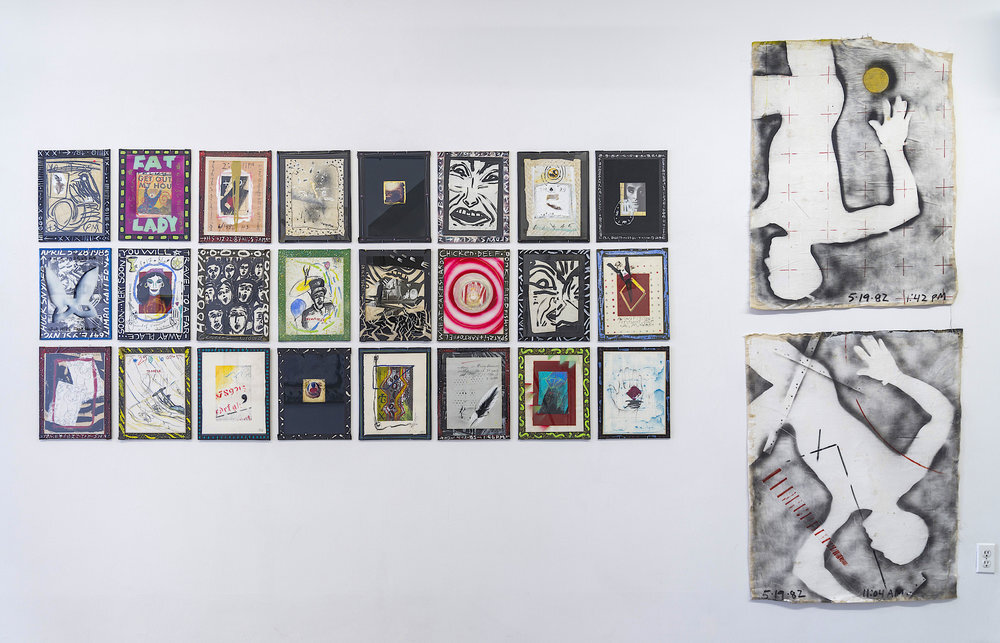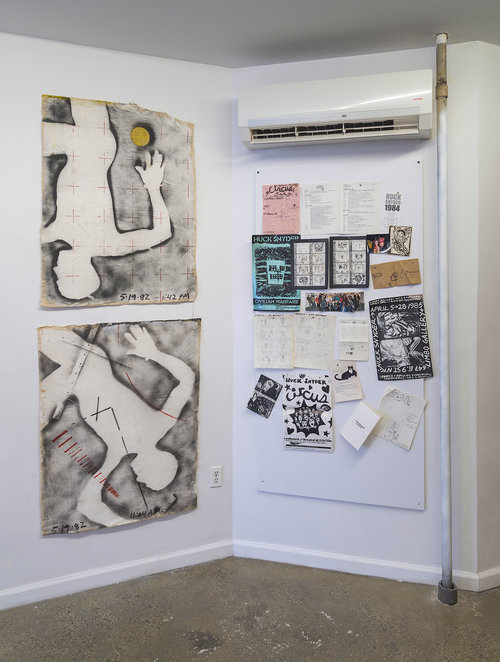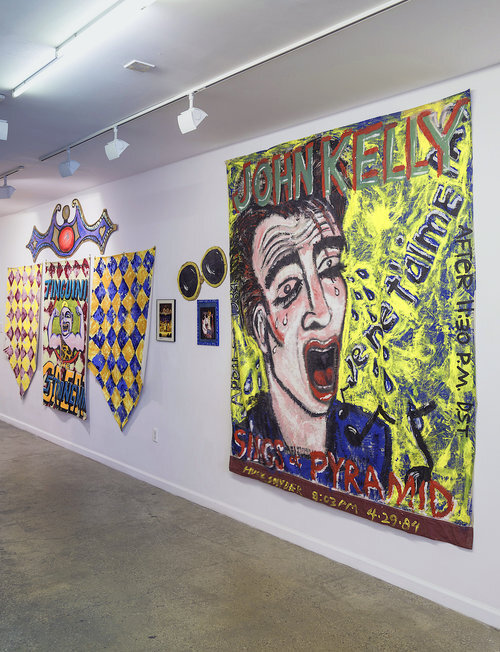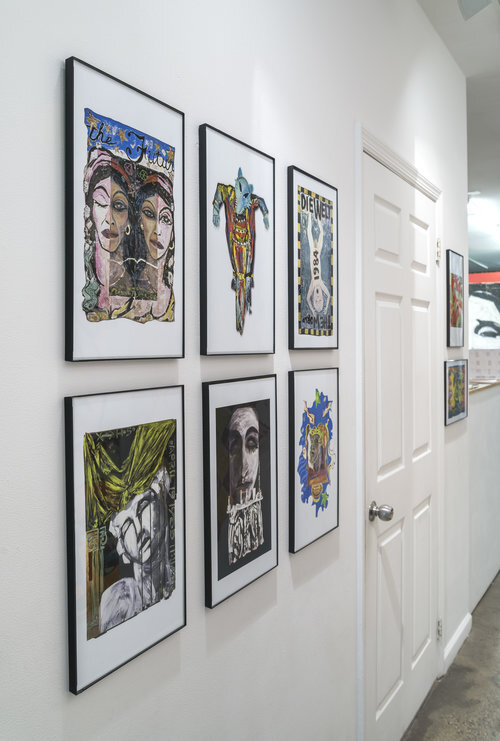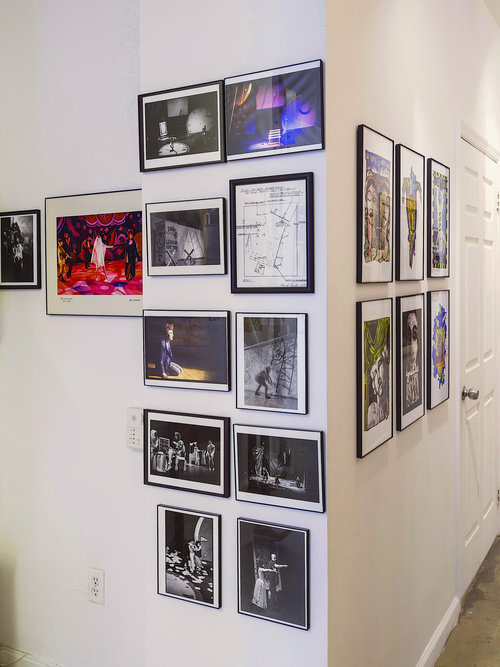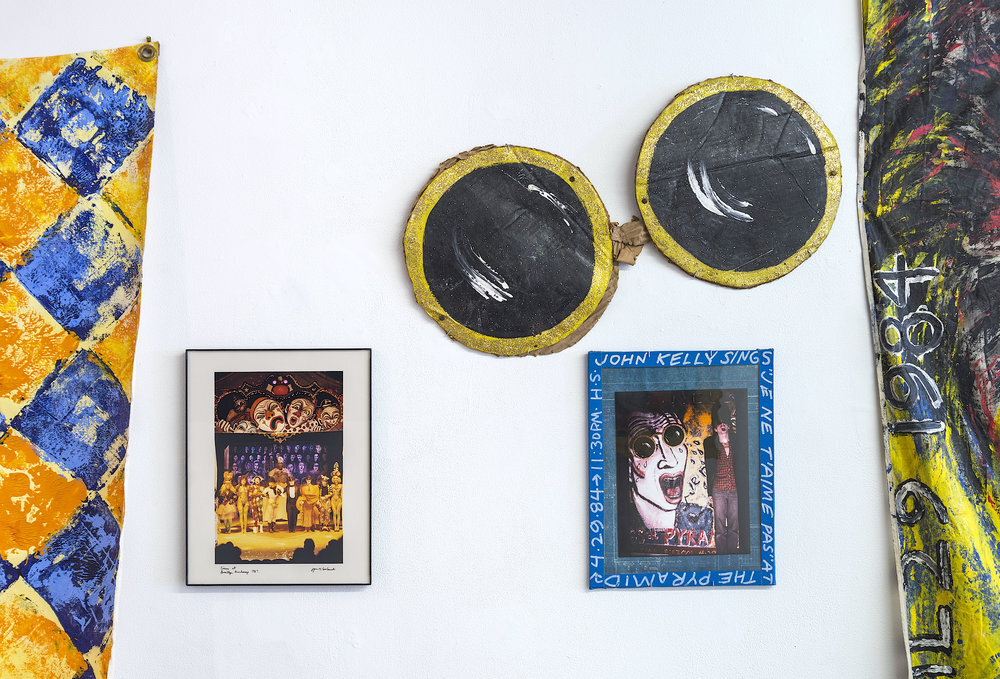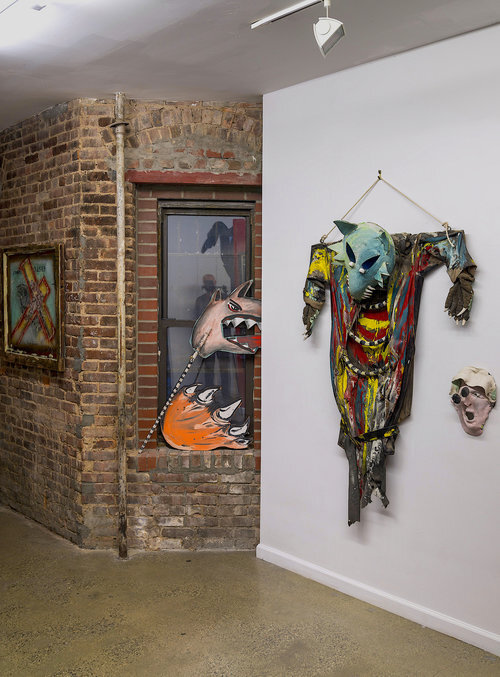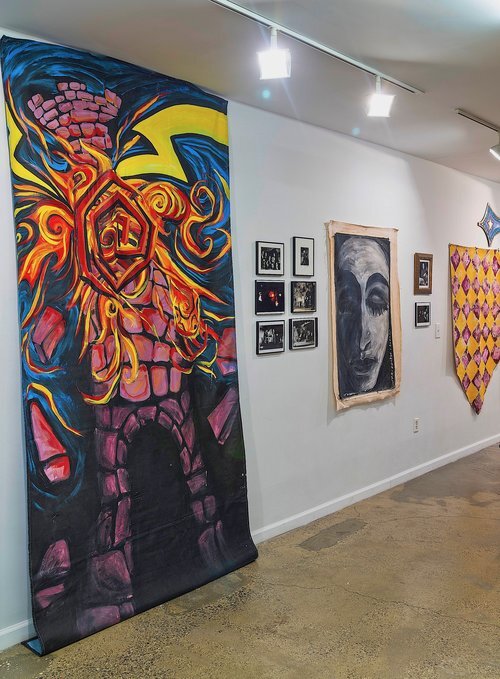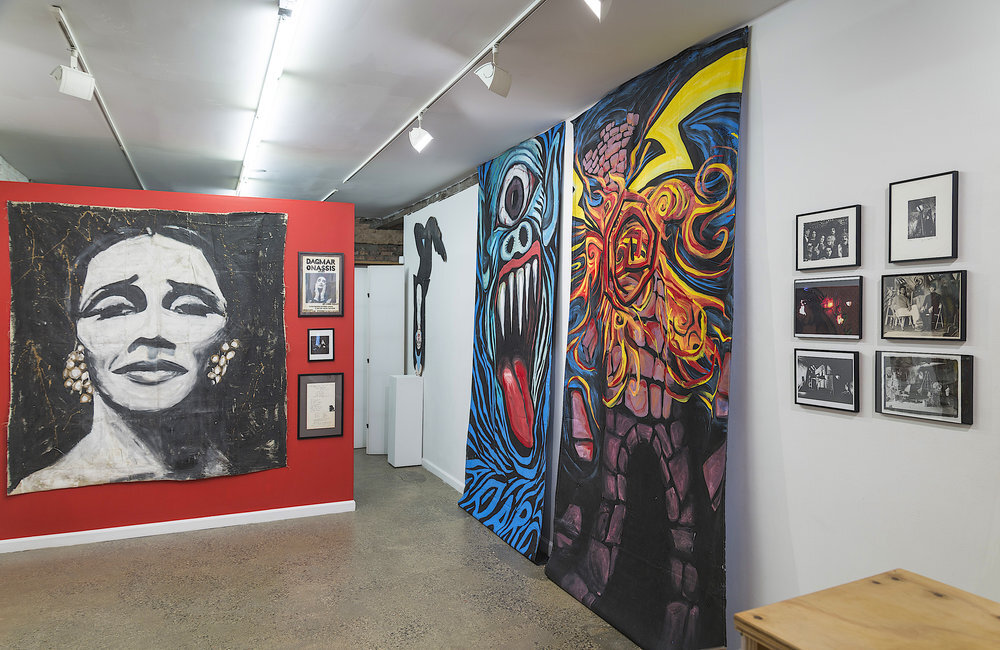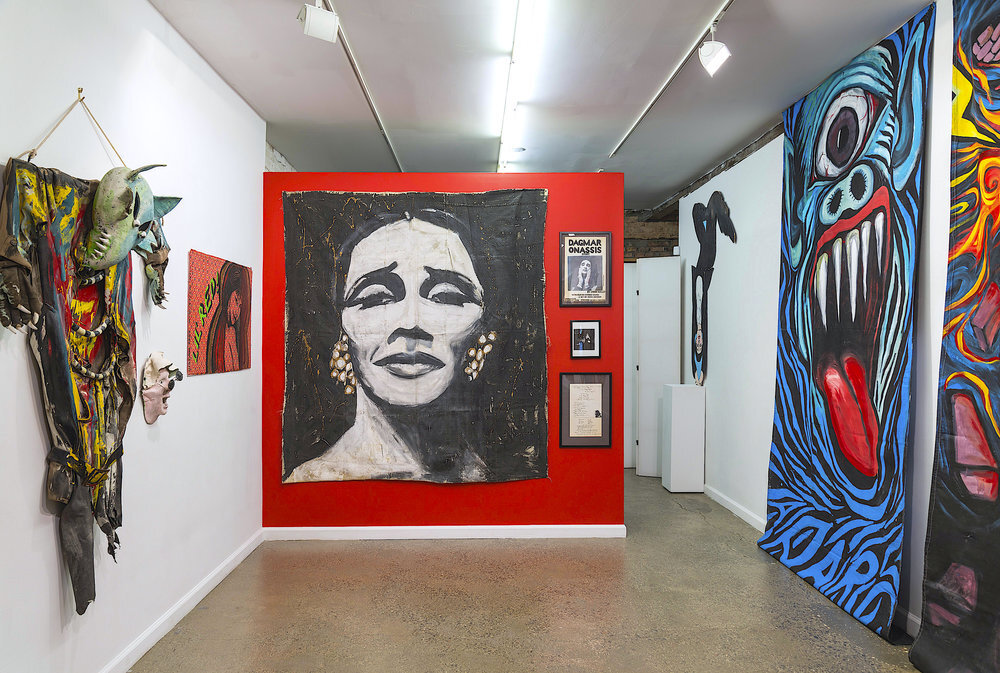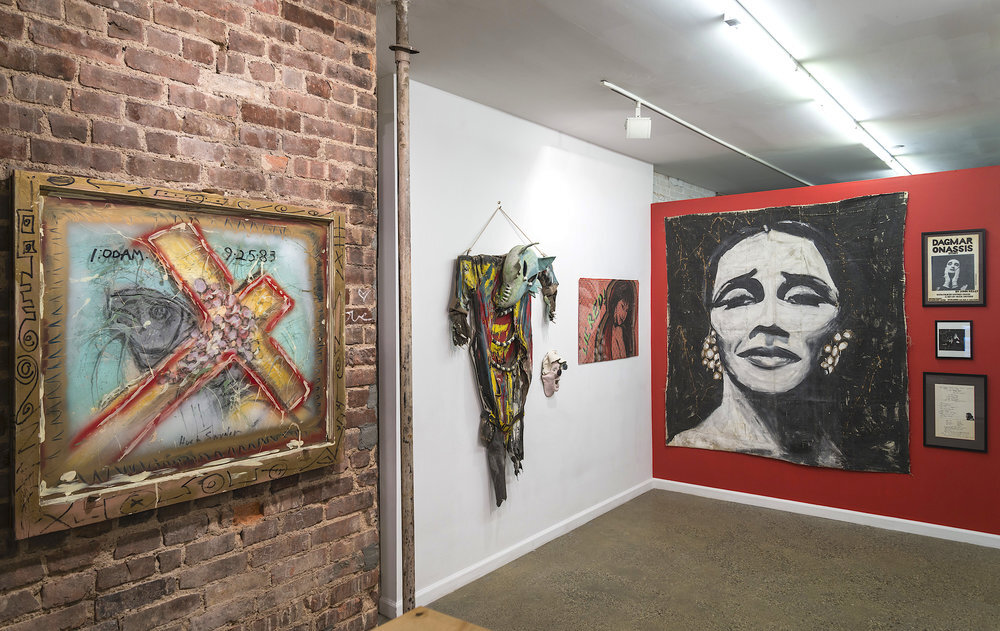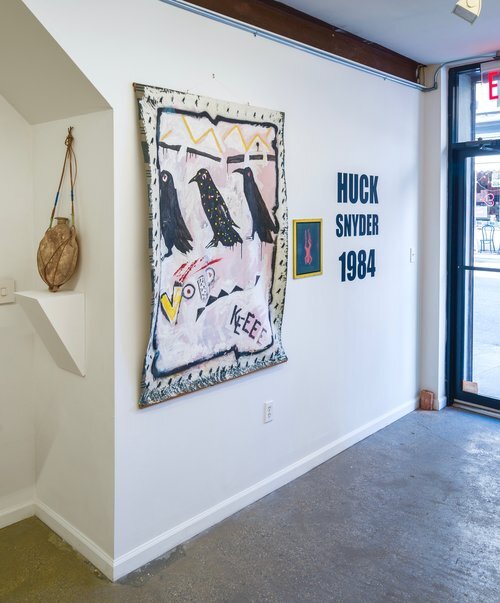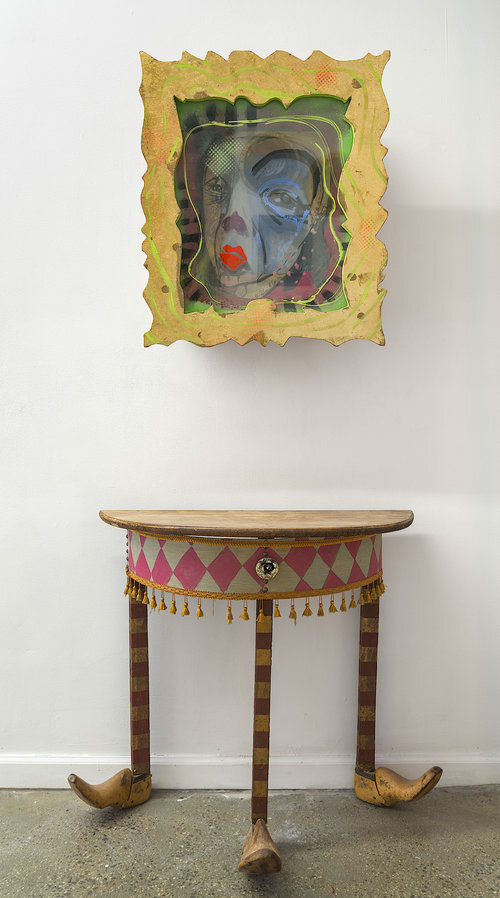Huck Snyder, Die Welt (1984,) Mixed media on paper, 55.5” x 32”
Huck Snyder: 1984June 13th - July 13th, 2019
Curated by: Wendy Copp, Hebe Joy, John Kelly, and Beatricia Sagar
Equity Gallery, 245 Broome Street, New York, NY 10002
Opening Reception: Thursday, June 13th, 6 PM-8 PM
Gallery Hours: Wednesday - Friday, 1-7 PM and Saturday, 12-6 PM
Equity Gallery is pleased to present 1984, an exhibition of the life works of New York based painter, stage designer, interior designer, and installation artist, Huck Snyder. Most active during the chaotic, eclectic era of the 1980’s East Village art scene, Snyder crafted sets for prominent dancers and choreographers such as Bill T. Jones, Ishmael Houston-Jones, and Bart Cook. Snyder is best known, however, for his work with frequent collaborator and former partner, the performance artist John Kelly.
Snyder was a facile painter, wielding a gestural expressiveness that flowed with bold certainty. He worked fast and loose, with an intensity that is evidenced in his brushwork and draftsmanship, renderings with a scribbled line quality, and busy patterns, often containing torn papers and found objects. He also used non-traditional methods of framing - taping the edges of his “glass pieces”, and painting on these borders with patterns, words, and symbols.
His choice of subject matter varied widely, and was often inspired by fairy tales, the Tarot, magic, German expressionism, and absurdist humor. Though not specifically political, he deployed a gritty rebellious visual language that stylistically pushed back against the oppressive conservatism embodied by the Reagan era Zeitgeist.
As an artist flourishing in a community that was being overrun by gentrification and decimated by the AIDS epidemic, and keenly aware of the fleeting nature of existence, most of his paintings are marked with the exact time and date of creation. Like a snapshot, each work is a peephole into his artistic impulse at a precise moment. Contemplating the hours and days hand-written on his pieces, 26 years after his death, makes for a poignant reflection: they speak from the past: “I was here. This was me in that moment.”
Huck created sets and installations for a variety of directors and choreographers and possessed an agile imagination and formidable execution that buttressed and enhanced the story being told. He was a designer with a keen eye for shaping theatrical spaces in ways that accentuated the emotional depth of the works, employing a variety of aesthetic dimensions in service to the vision of his collaborators. Huck also often partnered with the painter Beatricia Sagar, creating significant bodies of work in both New York and Berlin.
In his collaborations with the performance artist John Kelly, he designed the sets for “Diary of a Somnambulist,” (1985), “Pass the Blutwurst, Bitte” (1986), “Find My Way Home” (1988), “Maybe It’s Cold Outside” (1991), and “Akin: True But Dour” (1992). For these works Snyder implemented the distinctive jagged, angular forms emblematic of Expressionist art, or more lyrical gestures on huge painted backdrops and floor coverings, sometimes vibrantly colorful, other times dark and forbidding. Scraggly, patchy, and slathered-on brushstrokes, combined with dark, thick outlines and exaggerated perspective and proportions give Snyder's sets the appearance of both three-dimensional paintings, and off-kilter, feverish dreams. His sets verged on illusionary, with seemingly flat planes jutting out and protruding into space, creating a sense of unevenness and claustrophobia. In “Diary of a Somnambulist” specifically, the reality-bending, hallucinatory surrealism of his set design further amplified the already prominent themes of trances, dream-like states, and sleep-walking within Kelly’s work that was inspired by the 1919 German Expressionist film “The Cabinet of Dr. Caligari”.
When creating his own art and performance installations such as “Strip Poker,” “Monkey Lounge “and “Little Red Riding Hood” at venues such as Limbo Lounge, and La MaMa - Snyder leaned toward a more vaudevillian melodrama in a style that was both bold and child-like. This is nowhere more apparent than in his largest stage production “Circus.” Presented at both La Mama and the Brooklyn Anchorage, “Circus” was an abstracted funhouse romp of dark pratfall humor, farce and kitsch. In collaboration with a group of artists, Snyder constructed and painted the stage, costumes and props, into what became a jewel box plaything blown up to a life-size circus ring. Through his staging of an ensemble of performers drawn from the contemporary nightclub scene, “Circus” was an unapologetically brash, brazen, and boisterous spectacle, set to an original score by Diane Martell.
As a visual artist and theatrical designer who embraced a flamboyant and subversive theatricality, there is also an underlying sense of anxiety imbued in the works and settings that Snyder crafted. The materials he used were, by their very nature, not meant to last. Cheap house paint and cardboard. Constructing installations in dilapidated industrial buildings on the brink of crumbling. He was aware of the ephemeral essence of his artwork, and consciously employed these materials to mirror the uneasy precariousness that underlined both his own and his contemporaries’ situation. Part of an enclave of queer artists experiencing the last gasp of bohemia in New York, he built environments that reveled in what the establishment rejected, and his work pulsed with defiant energy. Like many of the artist’s involved in the East Village art scene during the 1980s, Huck Snyder's career was tragically short. He died of complications resulting from the AIDS pandemic in 1993 at the age of 39.
Despite the brevity of his career, Huck Snyder was extremely prolific, and exemplary of the best art produced during this illustrious yet turbulent period in New York City. Whether it was through his paintings, his collaborations, or performances of his own design, Snyder’s combination of hard-scrabble aesthetic, diverse forms of theater, and expansive schools of thought - though representing a certain ethos of his time - present a unique spectacle all its own.
About the Artist
Harry William Snyder IV, also known as Huck Snyder, was born in Lansdale, PA. in 1953. Snyder attended college at the College of William and Mary in Williamsburg, VA and the Goethe Institute in Berlin. His work has been seen at the The Lincoln Center of Performing art, The Brooklyn Academy of Music, La MaMa, and Dance Theater Workshop. His paintings were part of the now legendary experimental project space of David Wojnarowicz and Mike Bidlo, Pier 34, and seminal East Village gallery Civilian Warfare. His paintings, sets, and installations have been exhibited in solo and group shows cross country in the United States, and internationally in Europe and Asia. Awards he received for his theater work includes an Obie Award for Sustained Excellence in Scenic Design in 1988 and two New York Dance and Performance Awards- also known as Bessie Awards- in 1985 and 1991.
Co-curators of “1984” are Wendy Copp, Hebe Joy, John Kelly and Beatricia Sagar.
